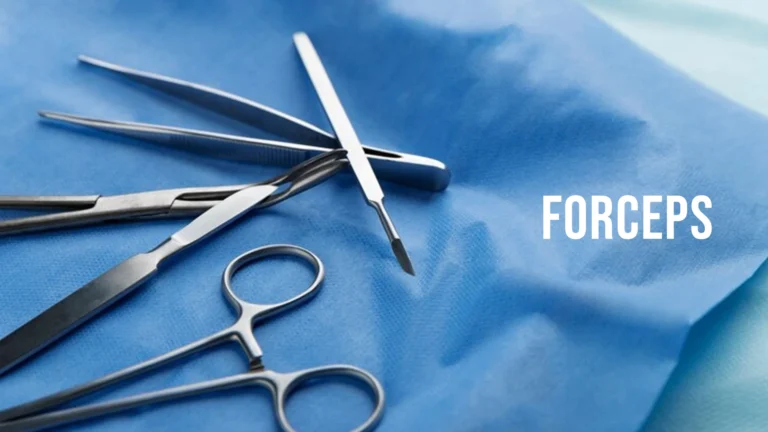Forceps are hand-held tools designed to grasp and manipulate tissue and other materials during surgical procedures. The variety of forceps’s available ensures that medical professionals have the right tool for different tasks, whether in the operating room, emergency room, or clinical settings. Understanding the types of forceps’s and their specific uses is crucial for effective patient care.
TRENDING
Explore Movies With MovieOrca: The Ultimate Film Hub
Importance Of Forceps In Medical Practice
Forceps’s play a vital role in various medical procedures. They enhance the precision and control of a clinician’s movements, allowing for safer and more effective interventions. The right type of forceps’s can minimize trauma to tissues and improve surgical outcomes. Additionally, proper use of forceps’s can reduce the risk of complications, making it essential for medical professionals to be knowledgeable about these tools.
The Top 10 Forceps Every Medical Professional Should Know
Adson Forceps
Description: Adson forceps’s are characterized by their fine tips and serrated jaws. They are usually about 6 inches long and have a rat-tooth design at the tip, allowing for a secure grasp of delicate tissues.
Uses: Primarily used in plastic and reconstructive surgeries, Adson forceps’s are excellent for handling skin flaps and other fine tissues.
Kelly Forceps
Description: Kelly forceps’s are larger than Adson forceps, with a straight or curved design and a locking mechanism. Their jaws are wider and may feature transverse serrations.
Uses: Commonly used for clamping blood vessels or tissues during surgical procedures, Kelly forceps’s are versatile tools found in almost every surgical setup.
Mosquito Forceps
Description: Mosquito forceps’s are small, straight or curved clamps with a fine serration pattern on the jaws. They are designed for precision in handling delicate tissues.
Uses: Ideal for clamping small blood vessels, these forceps’s are frequently used in minor surgeries and procedures.
Allis Forceps
Description: Allis forceps have a unique design with multiple interlocking teeth on the jaws. They provide a secure grip on tissues, allowing for effective manipulation.
Uses: Typically used for grasping heavy tissue or organs, Allis forceps’s are common in abdominal surgeries and gynecological procedures.
Babcock Forceps
Description: Babcock forceps’s feature a rounded, blunt tip designed to minimize tissue trauma. Their design allows for grasping delicate structures.
Uses: Frequently used in laparoscopic surgeries and gynecological procedures, Babcock forceps’s are ideal for handling organs like the intestines or ovaries.
Tissue Forceps
Description: Tissue forceps’s come in various designs, including curved and straight options, with serrated jaws for a secure grip.
Uses: They are primarily used to hold and manipulate tissues during surgeries, ensuring precision and control.
Hemostatic Forceps
Description: These forceps’s often have a locking mechanism and a broad jaw with transverse serrations. They are designed to occlude blood vessels.
Uses: Hemostatic forceps’s are essential in surgeries to control bleeding by clamping blood vessels.
Dressing Forceps
Description: Dressing forceps’s are longer and have a non-serrated grip, designed for handling sterile dressings and other materials.
Uses: They are primarily used in wound care and dressing changes, ensuring that sterile techniques are maintained.
Pediatric Forceps
Description: Designed specifically for smaller hands and delicate tissues, pediatric forceps’s come in various shapes and sizes.
Uses: These forceps’s are crucial in pediatric surgeries and procedures, allowing for safe handling of delicate tissues in infants and children.
Dental Forceps
Description: Dental forceps’s come in various designs, specifically shaped for different dental procedures. They often have a curved design and serrated tips.
Uses: These forceps’s are primarily used in dental surgeries to extract teeth or manipulate soft tissue in the oral cavity.
Conclusion
Forceps’s are indispensable tools in medical practice, each designed for specific tasks that enhance surgical precision and patient safety. Understanding the different types of forceps’s and their appropriate uses can significantly improve a medical professional’s effectiveness in various procedures. By mastering these tools, clinicians can ensure better outcomes for their patients.
ALSO READ: Essential Keeper Standards Test: Optimize Your Skills For Success
FAQs
What is a forceps in medical terminology?
A forceps’s is a handheld tool used in medical settings for grasping, holding, or manipulating tissues and other objects during surgical procedures. They come in various designs tailored for specific tasks, enhancing precision and control.
How do I choose the right type of forceps for a procedure?
Choosing the right forceps’s depends on the specific procedure and tissue type being handled. Consider factors such as the size, design, and intended use of the forceps’s to ensure optimal results.
Are forceps reusable or single-use?
Most surgical forceps’s are designed for multiple uses and can be sterilized between procedures. However, some disposable forceps’s are available for single-use in specific settings.
Can forceps cause tissue damage?
Improper use of forceps can lead to tissue damage. It’s essential to select the appropriate type and size for the task and to use them gently to minimize trauma.
What maintenance do forceps require?
Forceps should be cleaned and sterilized after each use to prevent infection. Regular inspections for wear and damage are also necessary to ensure their effectiveness and safety in medical procedures.
Understanding the various types of forceps and their applications is crucial for any medical professional. By familiarizing yourself with these essential tools, you can enhance your surgical skills and improve patient care outcomes.

